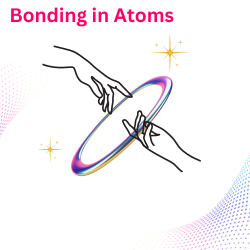Introduction to Ionic Bonding
A charge-containing atom is called an ion.
The charges are formed when an atom gains or loses electrons. When an atom gains electrons, the extra electrons are shown as a negative charge. And, if an atom loses its electrons, the loss is expressed with a positive charge on the atom.

The electrostatic attraction of the oppositely charged ions creates a chemical bond known as the ionic bond. In other words, ions create an ionic bond.
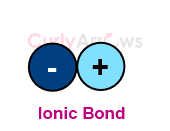
The strong electrostatic attraction holds these oppositely charged ions firmly in place and requires between 400-4000 kJ/mole of energy to separate them into gaseous atoms.
To understand the mightiness of the force involved, imagine a regular table salt that is so stable and unreactive at normal room temperature. The salt is Sodium Chloride (NaCl) made of oppositely charged ions, Na+ and Cl- held strongly by the ionic bond. The solid NaCl requires a very high temperature of 800 0C to convert to a molten state. To put things in perspective, a pot of water or sunflower oil boil at 100 o and 227 oC, and salt melts at much, much higher temperature.
The lattices are only broken at the melting point temperature of 800 oC. However, to further separate the ions into parent elements, sodium metal, and Cl2 gas requires electrical energy to be passed through the molten solution. Such a strong bond between ions Na and Cl is the best example of the nature of an ionic bond.
The ionic bond is also known as an electrovalent bond.
How does an ionic bond form?
An ionic bond is one of the two ways (the other is a covalent bond) by which atoms attain stable noble gas configuration by a rule known as the octet rule.
In an ionic bond, the atoms reach the noble gas configuration by transferring electrons from one atom to another.
If an atom (a metal) loses an electron, it has more protons in its nucleus than the electrons in the shell, causing imbalances in the equal ratio of the atom's positive and negative charges.
The atom becomes positively charged ion and is called a cation (mnemonic- the t in cation looks slightly like a + sign indicating a positively charged ion). The number of electrons lost is written in the superscript with the corresponding positive charge. Example, Na+, Mg2+ etc.
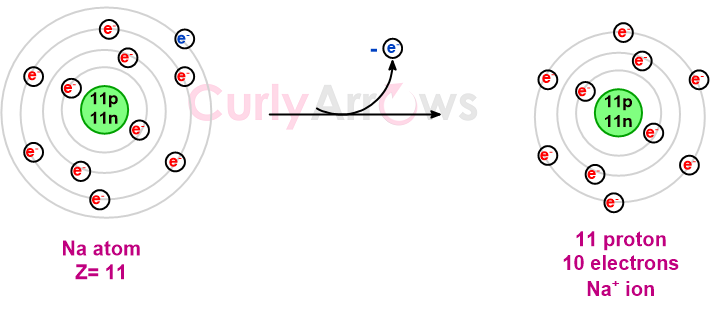
The electrons lost by the cation are picked up by another atom (a nonmetal) that is willing to accommodate the extra electrons in its shell.
And post the uptake, the atom now has more electrons in its shell than protons in its nucleus. Once again, there is an imbalance between the positive and the negative charges, with extra electrons than the nuclear protons. Such an atom is denoted with a negative charge and is called an anion (mnemonic- anion has an n for a negative charge). The number of electrons an atom accepts is written in the superscript with the corresponding negative charge- for example, Cl-, O2- etc.

The anions and the cations are stable due to attaining their corresponding inert gas electron configuration.
For example, lithium has an electron in excess from the nearest Helium gas configuration, and Fluorine has one electron less than the Neon configuration.
.png)
Lithium can easily lose its valence electron, Fluorine can gain one, and the transfer of one electron gives both a noble gas configuration. The ions formed can electrostatically interact and create the ionic compound Lithium Fluoride (LiF) by an ionic bond.
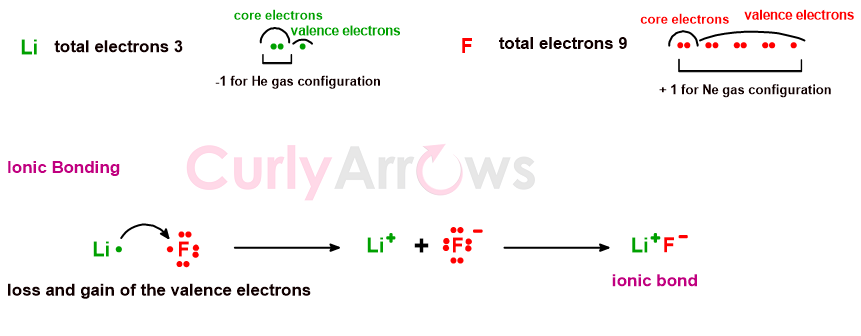
Another example is of ionic compound MgCl2. Mg loses two electrons to reach a stable Neon gas configuration. The Chlorine atoms pick the two electrons to attain the Argon gas configuration.
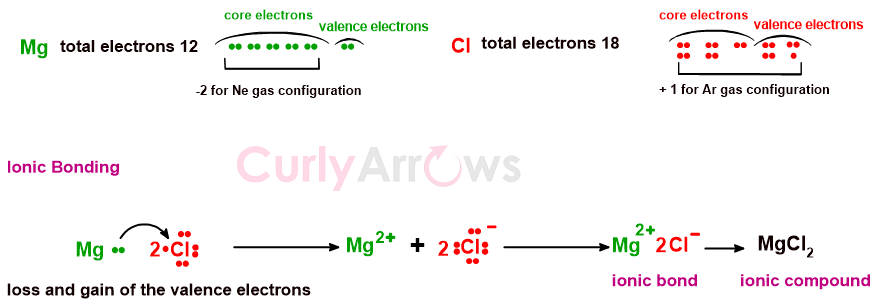
Once the negatively charged ion balances the positively charged ion such that the number of electrons lost and gained remains in correct stoichiometric quantities, an ionic bond is formed. Once combined, a large amount of energy is released, known as lattice energy.
Ionic bonding phenomena form a large crystal lattice, a regular, repeating arrangement of the ions in a 3-dimensional space, rather than forming individual molecules like covalent bonding. The positive ions are tightly packed with the negative ions in various cubic and hexagonal lattice arrangements in the solid state.
According to its size or radius, a cation can attract multiple anions and vice versa to create a regular, continuous geometric lattice pattern. Stronger ionic bonds result in stronger crystalline solid lattices reflecting the ionic compound's higher stability. The ionic compound's crystal lattice stability is measured in lattice enthalpy values. The greater value corresponds to a stronger, tighter lattice.
Therefore, ionic bonding is common in inorganic compounds but relatively uncommon in organic compounds.
